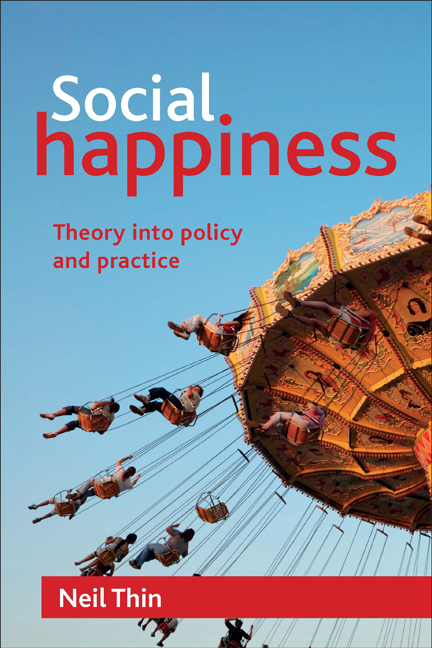five - Who makes happiness happen? On emotion work and psychosocial contagion
Published online by Cambridge University Press: 01 September 2022
Summary
Nothing is so interesting as happiness. (Florence Nightingale, cited in McDonald, 2001, p 94)
Anyone interested in the deliberate promotion of social happiness needs to think about the key players, the positive deviants who are exceptionally good at spreading joy. Yet, if asked to justify our patterns of social and professional recognition and remuneration, how articulate would we be in spelling out the different contributions people make to social happiness? From a happiness perspective we can re-evaluate individual capabilities such as leadership, effectiveness, responsibility, charisma, and success – rethinking what it means to ‘bring out the best’ in people and the social processes and contexts that make that happen (for a more cross-cultural version of these arguments, see Thin, 2011a). Since, throughout our lives, we learn how to be happy (or unhappy) from other people, it makes sense to try to enrich our analytical understanding of how some people – mood elevators, morale boosters, and meaning providers – use their characters and positions to bring out the best in other people.
For example, Florence Nightingale was famously good at promoting well-being through her determined attention to hygiene, statistics, and morale-boosting. Her life-long ailments often made her miserable, but her diaries show that she understood clearly that social contagion transmits feelings as well as germs. So she performed mental hygiene, keeping moderately cheerful by keeping busy helping others. And she taught others the importance of mental hygiene too, complementing her battles against soldiers’ insanitary practices and alcoholism with more upbeat work keeping their spirits up by helping them run cafes and write letters to loved ones. Biographies all too rarely dwell on these illuminating aspects of the lives of positive deviants.
Happiness scholarship has so far focused much more on individuals’ own happiness than on the roles of happiness facilitators. Yet we all know that happiness is socially contagious, and that it has to be culturally learned along with all other aspects of emotional regulation, self-evaluation, and meaning-making. It isn't just consumer habits, activities, afflictions, and suicide that are ‘socially contagious’: our (self-reported) happiness itself is strongly influenced by the (self-reported) happiness of the people in our social networks (Christakis and Fowler, 2010).
- Type
- Chapter
- Information
- Social HappinessTheory into Policy and Practice, pp. 69 - 80Publisher: Bristol University PressPrint publication year: 2012



